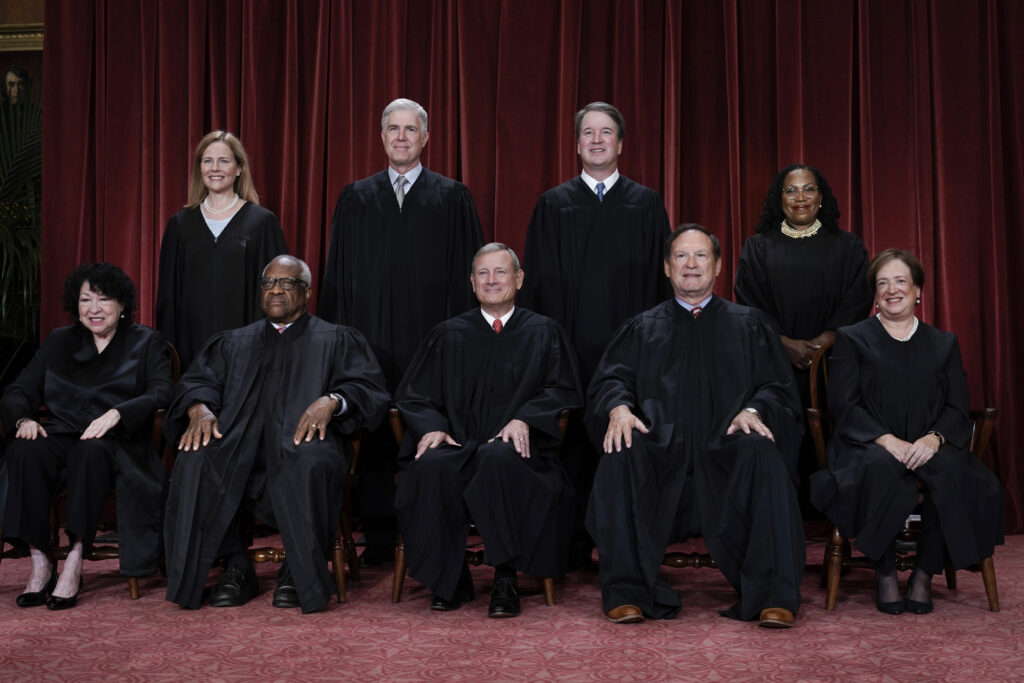The Supreme Court decided under 10 percent of its cases with an ideologically split vote during the 2024 term, according to statistics by SCOTUSblog.
The 2024 term began on October 7, 2024, and ended on June 27. During the term, 9.09 percent of rulings by the Court were ideologically split.
Why It Matters
The Supreme Court currently has a 6-3 majority of conservative justices.
Despite the supermajority, the justices reached a unanimous ruling in 42 percent of cases in the 2024 term, according to the statistics by SCOTUSblog. However, that number is down from 44 percent in the previous term and 50 percent in the 2022 term.
What To Know
The two justices who agreed the most this term were Samuel Alito and Clarence Thomas, who aligned on 97 percent of cases, according to the statistics.
Justices Sonia Sotomayor and Ketanji Brown Jackson came second in agreement, aligning on 94 percent of cases.
The two justices who were most aligned across ideological lines were Chief Justice John Roberts, who is conservative, and Justice Elena Kagan, who is liberal. The justices agreed in 82 percent of cases.
The two justices who were least aligned on rulings this term were Alito and Jackson, who agreed in 53 percent of cases. Jackson agreed with Thomas in 54 percent of cases.
Roberts was in the Court majority most often at 95 percent of cases. Justice Brett Kavanaugh was in the majority in 92 percent of cases.
Justice Amy Coney Barrett was in the majority in 89 percent of cases. Kagan was in the majority in 83 percent of cases. Justices Thomas, Alito, Sotomayor and Neil Gorsuch were in the majority in 78 percent of cases.
Jackson sided with the majority, with the lowest frequency at 72 percent.
What People Are Saying
Stephen Wermiel, a professor of practice in constitutional law at American University, previously told Newsweek: “Unbeknownst to many people, the Supreme Court decides a fair number of unanimous decisions—obviously not the most high-profile cases, but they are a factor.”
Michael Salamone, an associate professor of political science in the School of Politics, Philosophy, and Public Affairs at Washington State University, previously told Newsweek: “The Supreme Court tends to rule unanimously more frequently than a lot of people expect…I find that this is because divided cases get more coverage—not only are the issues that divide the justices often more politically salient, but also the partisan divisions on the Court themselves are newsworthy.”
What Happens Next
The 2025 Supreme Court term will begin on October 6.
Do you have a story that Newsweek should be covering? Do you have any questions about this story? Contact [email protected].
Read the full article here
